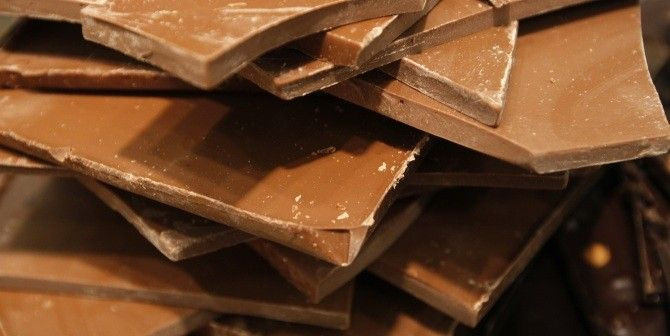Genomics makes for better chocolate

Who said investments in research don't pay off? Scientists from around the world are diligently working to make sure that the world's finest chocolate is better and more available.
An international team of plant geneticists, biologists and other scientists have successfully sequenced and assembled the chocolate tree genome, according to a report in the current issue of Nature Genetics.
Led by Claire Lanaud of CIRAD, the French agricultural research center, and Mark Guiltinan of Penn State University, the team of scientists from 20 institutions from France, the U.S., Ivory Coast, Brazil and Venezuela have sequenced the DNA of Theobroma cacao, considered to produce the world's finest chocolate.
Fine cocoa production is estimated to be less than 5 percent of the world cocoa production because of low productivity and disease susceptibility, said Guiltinan, professor of plant molecular biology.
But that could change now with this breakthrough, the researchers said, and the producers of high quality chocolate, and the farmers who grow it - not to mention the millions who enjoy the treat -- will benefit.
The Maya domesticated this variety of Theobroma cacao, called Criollo, about 3,000 years ago in Central America, and it is one of the world's oldest domesticated tree crops. But, because Criollo is subject to disease, many modern growers opt to raise hybrid cacao trees that produce chocolate of lower quality but are more germ-resistant.
Currently, most cacao farmers earn about $2 per day, but producers of fine cacao earn more. Increasing the productivity and ease of growing higher quality cacao can help to develop a sustainable cacao economy. The Criollo trees are also seen as an environmentally beneficial crop because they grow best under forest shade, allowing for land rehabilitation and enriched biodiversity.
Consumers have shown an increased interest for high-quality chocolate made with cocoa of good quality and for dark chocolate, containing a higher percentage of cocoa, while also taking into account environmental and ethical criteria for cocoa production, the researchers said in the journal article.
The team's work identified a variety of gene families that may have future impact on improving cacao trees and fruit either by enhancing their attributes or providing protection from fungal diseases and insects that effect cacao trees.
Our analysis of the Criollo genome has uncovered the genetic basis of pathways leading to the most important quality traits of chocolate -- oil, flavonoid and terpene biosynthesis, said Siela Maximova, associate professor of horticulture at Penn State, and a member of the research team.
It has also led to the discovery of hundreds of genes potentially involved in pathogen resistance, all of which can be used to accelerate the development of elite varieties of cacao in the future, Maximova said.
The researchers are interested in specific gene families that could link to specific cocoa qualities or disease resistance. They hope that mapping these gene families will lead to a source of genes directly involved in variations in the plant that are useful for acceleration of plant breeding programs.
Hidden in the genome the researchers also found 84 genes that code for the production of cocoa butter, a substance highly prized in chocolate making, confectionary, pharmaceuticals and cosmetics. Most cocoa beans are already about 50 percent fat, but these genes control not only the amounts but also quality of the cocoa butter.
Other genes were found that influence the production of flavonoids, natural antioxidants and terpenoids, hormones, pigments and aromas. Altering the genes for these chemicals may produce chocolate with better flavors, aromas and even healthier chocolate, the scientists said.
© Copyright IBTimes 2024. All rights reserved.





















